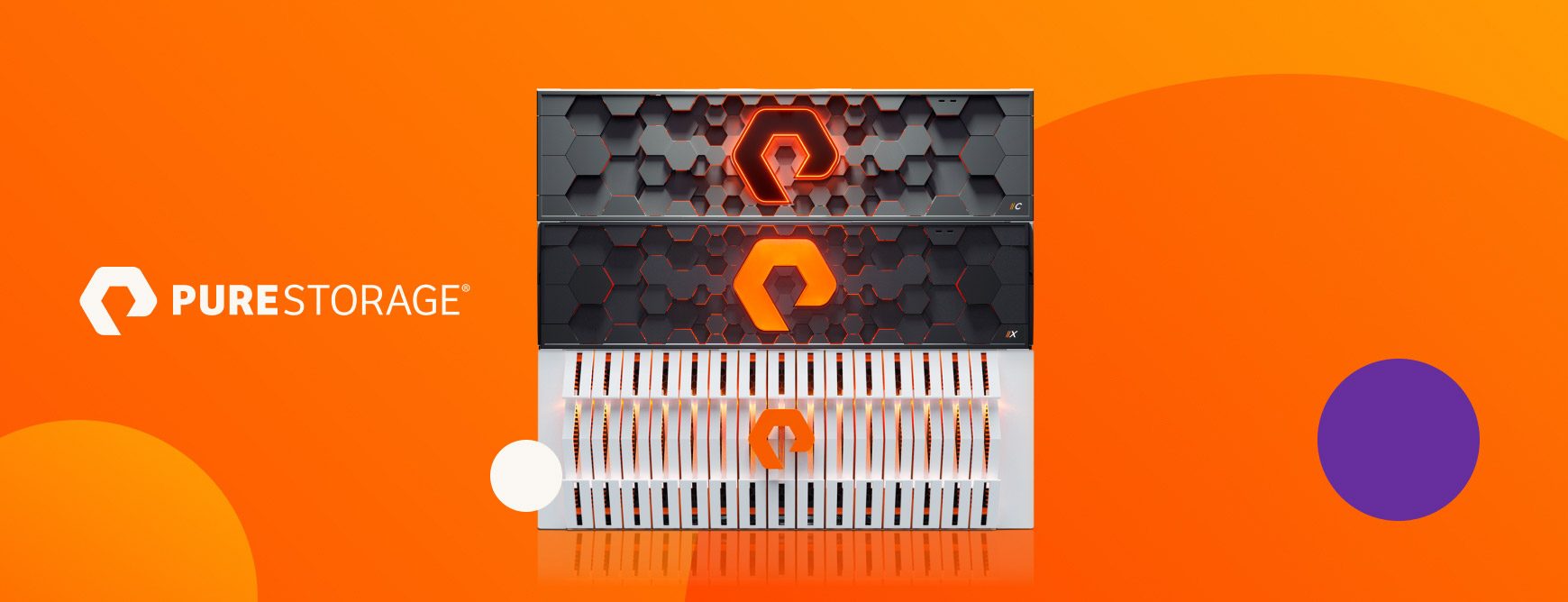All-Flash Arrays vs. Hybrid Storage Arrays vs. HDD Arrays
Should you go all-flash, hybrid, or traditional? It’s a question many businesses face when picking the right on-premises data storage solution for their needs. Factors such as speed, performance, and reliability are only part of the equation. Ease of adoption, maintenance, and security are also top of mind.
Generally speaking, all-flash arrays are the fastest and most performant. These are followed by hybrid arrays which use a combination of flash and HDD within the same storage array. While not as fast as all-flash arrays, cheaper HDD racks may be used to add capacity when performance isn’t needed. Traditional arrays are the slowest.
Why Choose Pure for All-Flash Arrays?
Although modern data centers are looking to all-flash arrays as a solution to performance and capacity demands, not every all-flash array is created equal. It's important to understand the difference between purpose-built arrays and retrofit arrays. Retrofits attempt to combine all-flash with 20-year old disk-based architectures, preventing customers from getting the best ROI and exposing shortcomings in performance, reliability, and simplicity.
Pure Storage FlashArray™, via its stateless architecture and flexible metadata, has a proven history of enabling customers to take advantage of both flash and compute advances—non-disruptively. The simplicity and agility of Pure Storage solutions eliminate the constraints of retrofit flash-based alternatives and the complexity of traditional storage portfolios.
All-Flash Array Use Cases
So where do all-flash storage arrays fit into the enterprise-tiered storage hierarchy? Due to the higher cost of SSDs over HDDs, all-flash storage arrays have long been treated as the premium SAN solution for Tier 0 and Tier 1 applications. However, thanks to Moore’s Law, the cost efficiency of all flash-arrays is on the rise, unlocking higher storage tiers. Pure Storage’s FlashArray//C is the first all-flash SAN designed to compete at cost with hybrid storage arrays targeting Tier 2 storage applications.
Below is an overview of use-cases per storage tier for all-flash storage arrays:
- Tier 0: The highest performance tier (greatest IOPS/$), covers block storage solutions for financial transactions, ecommerce apps, and any applications where performance is a premium.
- Tier 1: The second-highest performance tier (balance between IOPS/$ and capacity), covers business processing, data analysis, and data mining.
- Tier 2: Lower performance tier (capacity focused), covers email, file, and print, data backups, and archives.
Enterprise Flash Storage Arrays from Pure Storage
Enterprise-grade storage arrays are purpose-built to take advantage of the unique characteristics of flash.
Pure Storage currently offers two all-flash storage array product lines to address Tier 0, Tier 1, and Tier 2 storage needs:
- FlashArray//X: A performance-optimized, all-flash, end-to-end NVMe and NVMe-oF storage array designed to provide block storage for Tier 0 and Tier 1 applications
- FlashArray//C: A capacity-optimized, all-flash NVMe storage array for Tier 2 applications
These all-flash arrays (AFAs) are revolutionizing storage by offering cloud-like application consolidation and unprecedented agility—features that serve as catalysts for both IT and business transformation. Pure Storage is a leader in this market, as highlighted in the latest Gartner Magic Quadrant and Gartner Critical Capabilities reports on solid-state arrays.





